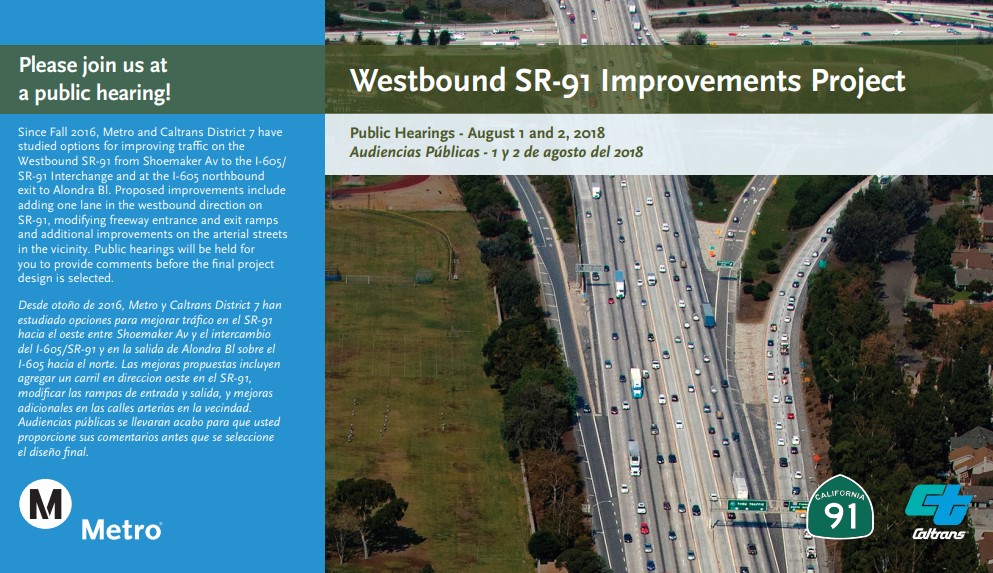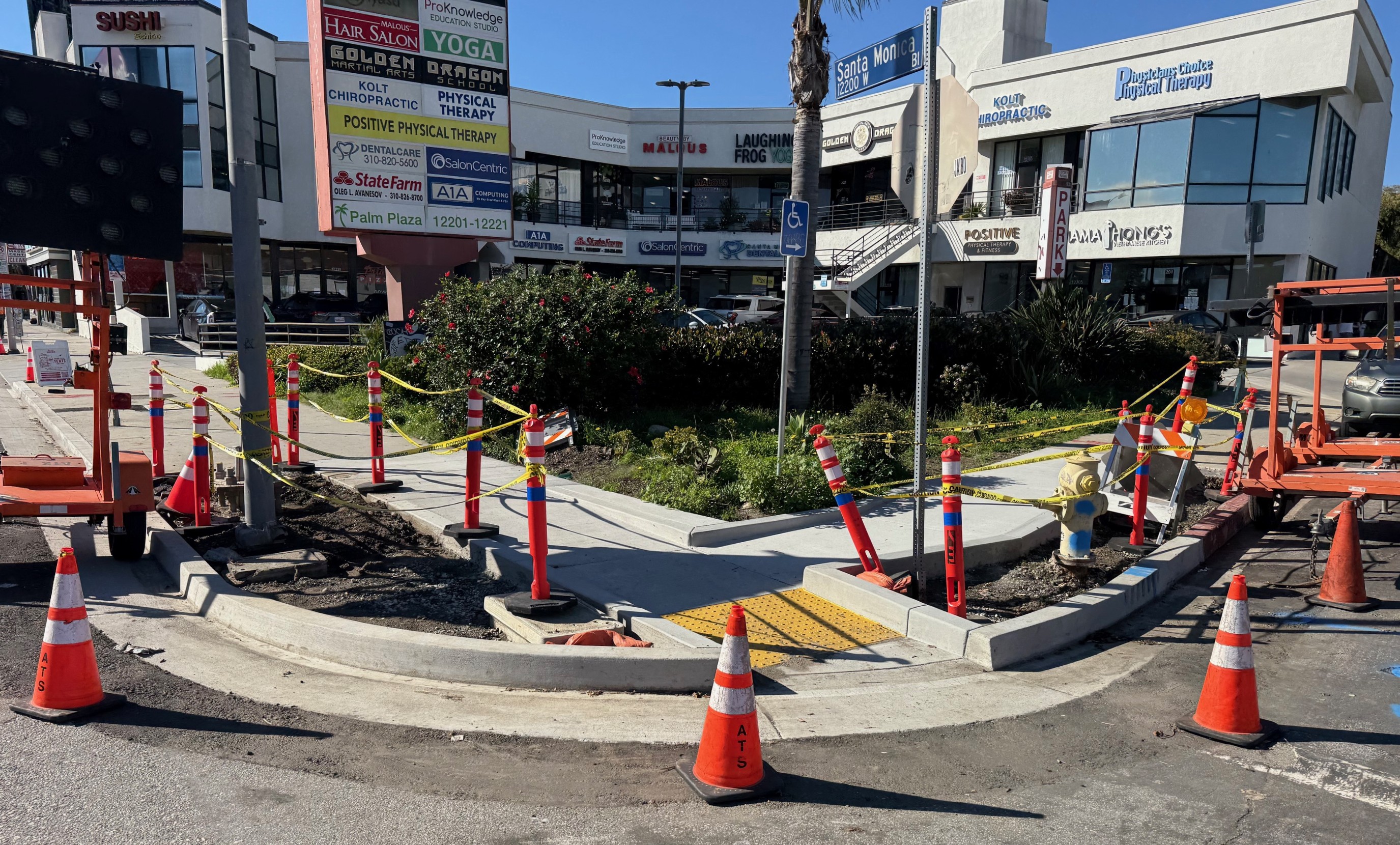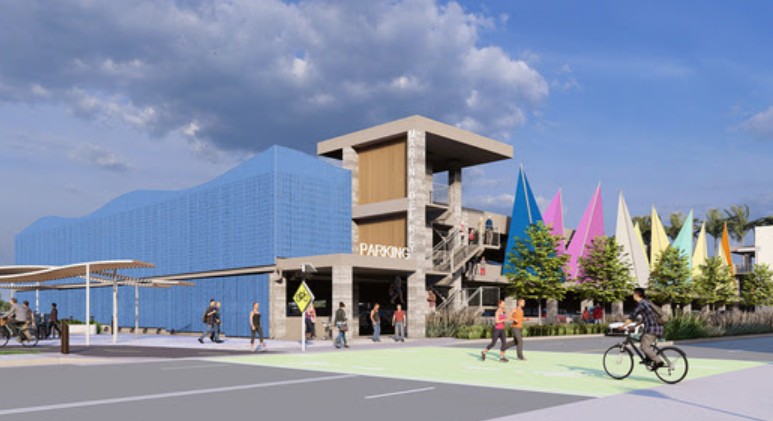In the next couple years, Metro and Caltrans plan to spend about $400 million widening parts of the 91 Freeway. Widening the 91 through South L.A. and Southeast L.A. will result in more driving and more pollution in these already pollution-burdened communities of color.
The 91 Freeway expansion is broken up into three separate projects, detailed below. In budget descriptions, Metro terms these 91 Freeway widening projects as "local subregional projects" as opposed to "capacity improvement projects," though they all add lanes to the 91 Freeway and increase its capacity.
Metro's three 91 Freeway widenings are part of Metro's SR-91/I-605/I-405 “Hot Spots” Program. Hot Spots freeway expansion is funded by Metro Measure R and M sales taxes and supplemented by other transportation funding, including state Trade Corridor Enhancement Program (TCEP) grants.
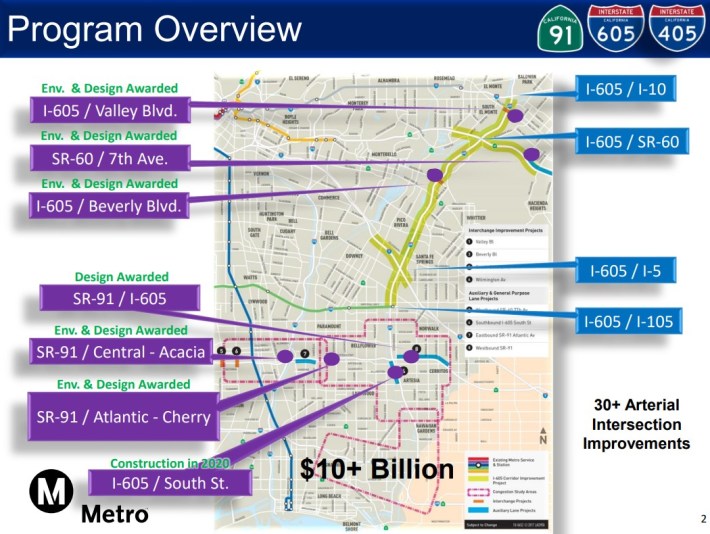
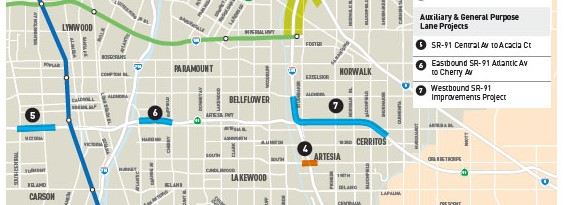
East to west, the three Metro 91 Freeway expansion projects are:
- Westbound SR-91 Improvements Project
- EB SR-91 Atlantic Avenue to Cherry Avenue Auxiliary Lane
- SR-91 Central Avenue to Acacia Court
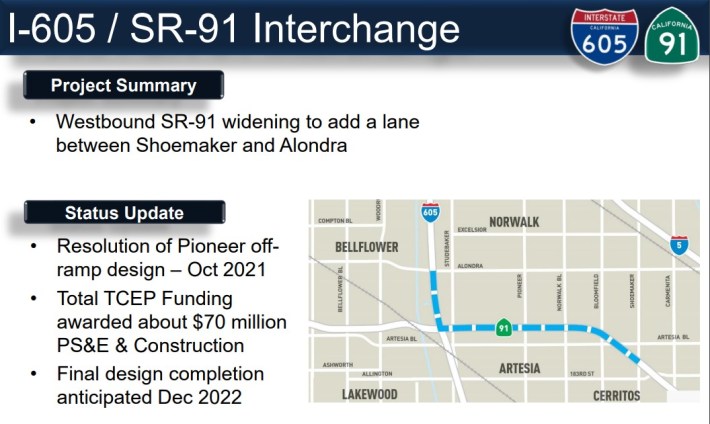
Project 1: Westbound 91 Freeway Improvements Project
This 91 Freeway widening project is located on the westbound 91 approximately four miles between Shoemaker Avenue and the 605 Freeway exit at Alondra Boulevard. It's in the cities of Artesia and Cerritos, with the project's northwest tip touching the city of Norwalk.
In 2019, Caltrans approved the project's environmental document, called a Finding of No Significant Impact (FONSI).
According to the FONSI, the project "would add one new mixed-flow lane in the westbound direction on SR-91 from approximately Shoemaker Avenue to I-605." In addition, the project widens two-lane freeway ramps to three lanes.
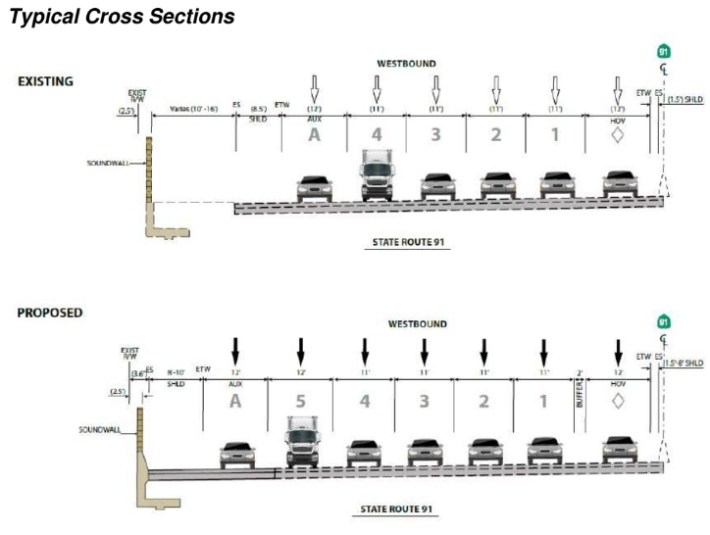
Though the project adds a new westbound lane to the main trunk of the freeway, it does this by eliminating a sparsely landscaped buffer area located between the freeway shoulder and the existing sound wall.
In the 2019 FONSI, Caltrans approved plans for this project to demolish five homes and two businesses in the city of Artesia. The demolitions were in order to reconfigure the on/off ramps at Pioneer Boulevard.
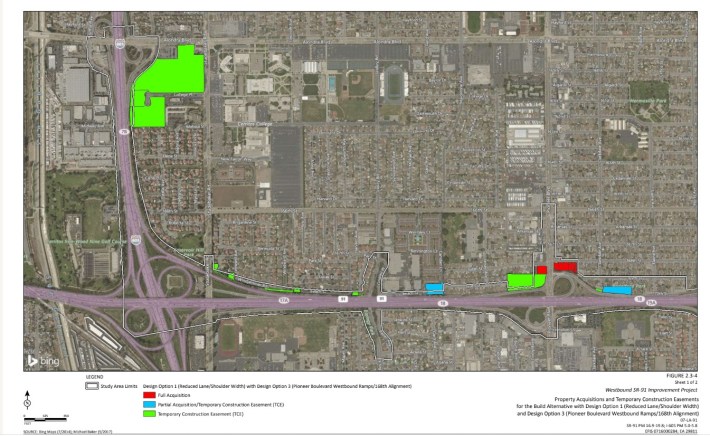
The project plan was apparently recently revised to "not relocate any residential or business property" (per The Source). This is good news, but it has been difficult to confirm what the revised plan is. When SBLA asked Metro for information on the revision, Metro directed SBLA to "Check with cities or Caltrans" for information. The city of Artesia directed SBLA to contact Caltrans. Caltrans responded "defer to Metro." The revised project design does not appear to be available online. It is not clear if revisions at this point would trigger a reopening of the environmental process that was concluded in 2019.
Spokespersons for both Metro and Caltrans now state that the demolitions approved in 2019 are no longer happening. In the words of Caltrans Public Information Officer Jim Medina, via email to SBLA, "The [Westbound 91] project does not have any residential or commercial relocation / displacements."
The project does include, in the words of Metro Project Manager Carlos Montez (speaking at the May 25 Gateway Cities Council of Governments SR 91/605/405 Corridor Cities Committee), "some sliver acquisitions... just slivers here and there." These slivers come at the expense of several local public facilities, including Tracy High School, A.J. Padelford Park, and Ecology Park.
According to the most recent figures available (June 2021 Metro presentation), the Westbound 91 project is estimated to cost $162.4 million: $11 million for planning and acquisitions (maybe that cost will be cheaper with the new no-demolition plan?) and $151 million for construction, which is anticipated to start September 2023.
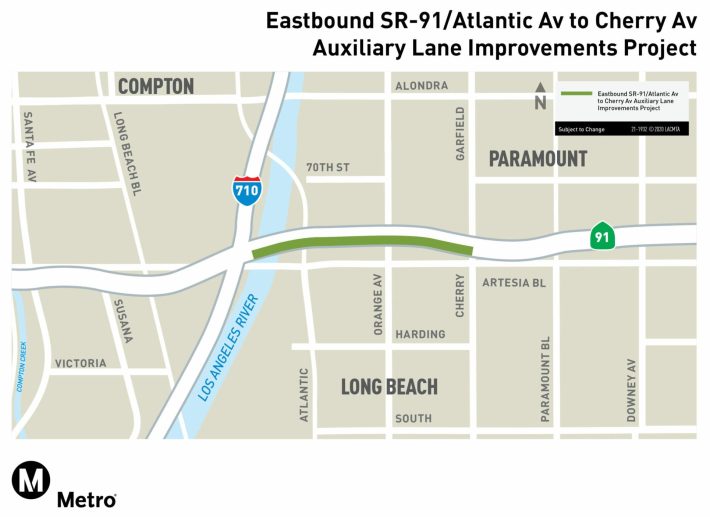
Project 2: Eastbound 91 Freeway from Atlantic Avenue to Cherry Avenue Auxiliary Lane
Caltrans approved a FONSI for the Eastbound 91 project in May 2021 [see SBLA Tweet thread at that time]. The project expands the eastbound 91 by adding what is called an "auxiliary lane," which is a car lane that runs from onramp to offramp.
Though the project adds a lane, the FONSI falsely asserts that "The Project is not increasing capacity." It explains this away by saying that increased capacity isn't really increased capacity because "the primary purpose of the addition of an auxiliary lane is to improve safety, traffic operations, and not to increase capacity." (Note that, though Metro often claims that it is increasing freeway capacity to improve safety, this is another myth. More capacity leads to more driving which leads to more crashes. See two Portland articles debunking the add-capacity-to-improve-safety myth.)

This Eastbound 91 Freeway project would not demolish any homes, businesses, etc. as the expansion would take place within existing Caltrans right-of-way.
A January 2022 motion, authored by Metro Boardmember Janice Hahn, mandated that this project meet city of Long Beach tree replacement standards. Per the motion, the freeway project would remove 174 trees, but plant only 153 replacement trees; now it will plant two trees for each tree removed. The motion also mandates that Metro pay for air filtration systems for nearby homes and businesses, as requested by the city.
According to the May 2021 FONSI the project is expected to cost $95 million. According to a June 2021 Metro presentation, the project is estimated to cost $88 million and is anticipated to start construction in January 2023.

Project 3: 91 Freeway widening from Central Avenue to Acacia Court
This 91 project would reconfigure on/off ramps and roads (mainly Artesia Boulevard which is essentially a frontage road there, running one-way eastbound south of the freeway, and one-way westbound north of it) along about 1.4 miles of the 91 Freeway through a largely industrial part of the city of Compton, with a small portion in the city of Carson. The location is just southwest of the Metro A Line Artesia Station.
While the main twelve-lane (eight regular lanes, two HOV lanes, two auxiliary lanes) freeway itself would not be widened, the current one-lane on/off ramps and connecting auxiliary lanes would be widened to two lanes - in effect adding two more lanes (one in each direction) in this stretch.
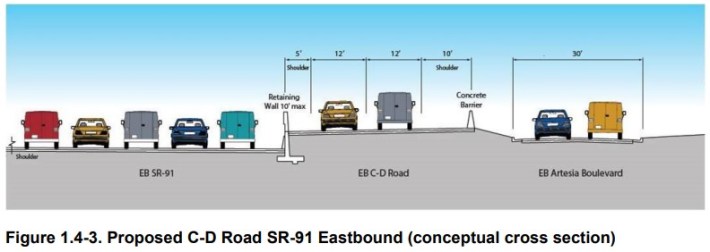
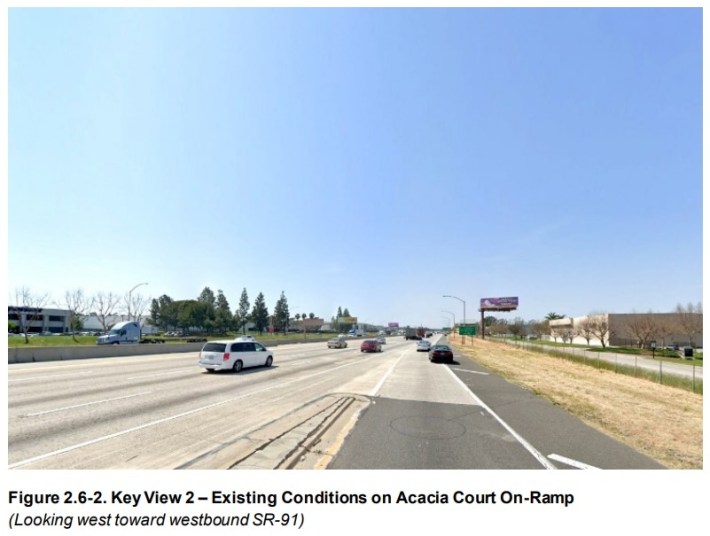
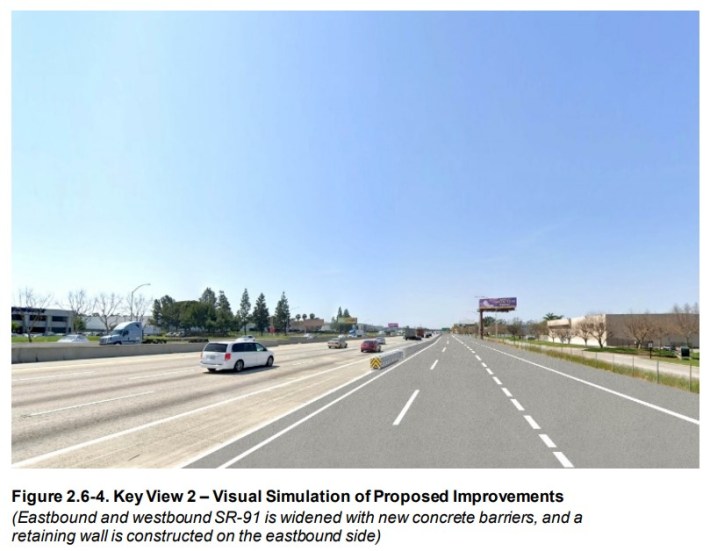
There are no full demolitions called for on this 91 widening project as it would be located largely within existing Caltrans right of way. There are nine "sliver" partial property acquisitions needed to widen intersections for providing greater turning radii for trucks.
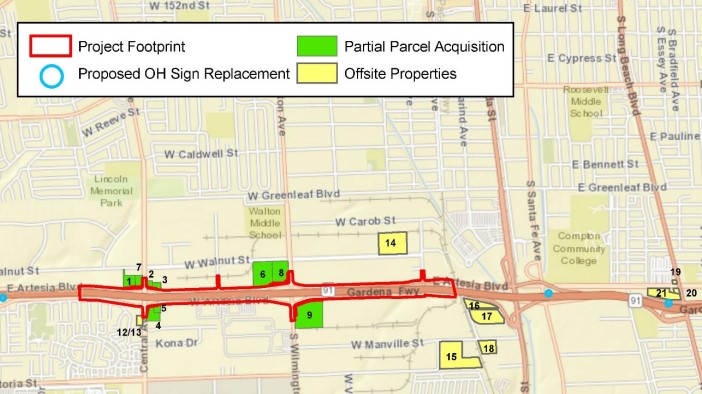
The project has a handful of complete streets features, including adding sidewalks in some places where they are currently missing, and adding nearly four lane-miles of unprotected buffered bike lanes on Artesia Boulevard. (That's the street where Caltrans is doing the widened turn radii for trucks and drivers to get around corners faster. What could go wrong?)
The 91 Freeway from Central to Acacia FONSI was approved by Caltrans in March 2021.
According to a June 2021 Metro presentation, this project is estimated to cost $125 million and is anticipated to start construction in October 2024.
